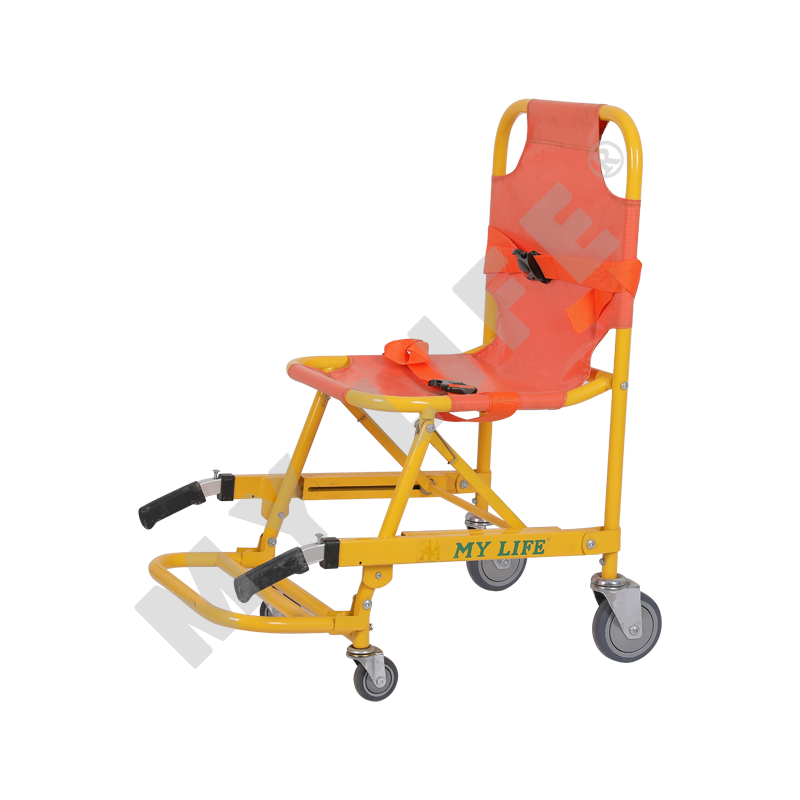Do you know about operable ambulance chairs?
The ambulance chair is an important equipment for medical personnel. They help keep patients safe by providing extra support to the spine and reducing the risk of spinal injury. The present invention is a unique ambulance chair design that enables first responders to place the patient in a comfortable and safe position. It includes a light, maneuverable chair with restraint for ambulance attendants.
The Ambulance Chair is designed with ergonomics and practicality in mind. Its rotatable front wheels automatically position and prevent the patient from rolling. In addition, the quiet operation of the chair is guaranteed by its central brake, which can be operated with one hand. Seat and backrest are made of Spentex(r) and filled with gradient padding for optimum stability. In addition, the ergonomic headrest allows the user to properly secure the head.
The mechanism that steers the ambulance chair provides the ability to pivot the chair to various positions. The chair can face the wall of the ambulance and can be placed behind the attendant or above the attendant. The chair can be fixed by rails, which are integrated with the floor of the ambulance. The shape of the track can be a curved cylinder or the shape of a rectangular channel.
The track on the steerable ambulance chair can be locked or released. When locked, the chair prevents unwanted movement. After release, the chair can be rotated and positioned to meet the needs of the patient. It can also be configured to face the security direction.
Steerable ambulance chairs may also have restraints. These devices limit the arm movement of the attendants and prevent them from moving suddenly.
Restraint device for restraining ambulance personnel in motorized ambulance chairs
If you are in a motorized ambulance chair and cannot control an emotional patient, you can try physical restraint. These constraints are usually applied to the torso or limbs. These techniques are legal and can help soothe agitated patients. However, they should only be used when medically necessary. Also, constraints should be non-judgmental. You should also explain the reasons for the restraint to the patient's family. This can help you look more caring and professional.
The restraint methods of motor ambulance seats include chemical restraint and physical restraint. Chemical restraint is not recommended for all patients and requires consultation with a mental health professional before using restraint. These measures are only needed when the patient's behavior or movements are uncontrolled, whether due to substance abuse or excitatory delirium. In these cases, law enforcement officers should be called. Physical restraint protocols must be developed in collaboration with a mental health organization and approved by medical guidance.
Stair Stretcher With Iron Materials MLF999A3-1(TD010114D)

Stair Stretcher With Iron Materials MLF999A3-1(TD010114D)

● THE STRETCHER IS MAINLY USED FOR TRANSFER THE PATIENT UP AND DOWM FORM STAIRS, OR OTHER NARROW AREAS.
● IT IS MADE OF HIGH-STRENGTH ALUMINUM WITH FOUR WHEELS.
● THE SURFACE OF THE STRETCHER IS MADE OF LEADER FABRIC WHICH CAN BE TAKE DOWN FOR THE ZIPPER ON BACK.
● THE BACK OF THE STRETCHER DESIGNED WITH FOUR FOLDED HANDLES.
● THE STRETCHER WITH BELTS TO MAKE SURE THE PATIENTS SAFETY DURING TRANSFER THE PATIENTS.

 英语
英语 中文简体
中文简体






